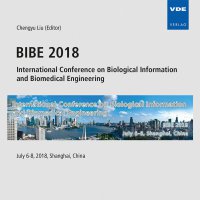Absolute measurement of tissue oxygen saturation with NIRS
Conference: BIBE 2018 - International Conference on Biological Information and Biomedical Engineering
06/06/2018 - 06/08/2018 at Shanghai, China
Proceedings: BIBE 2018
Pages: 5Language: englishTyp: PDF
Personal VDE Members are entitled to a 10% discount on this title
Authors:
Zhu, Jingyi; Liu, Jun (Department of Biomedical Engineering, Key Laboratory of Biomedical Engineering of Ministry of Education of China, Zhejiang University, Hangzhou, Zhejiang, China)
Mou, Jian (Research Institute of Zhejiang University-Taizhou, Taizhou, Zhejiang, China)
Abstract:
In order to avoid irreversible damage caused by tissue hypoxia, the regional tissue oxygen saturation (rSO2) should be monitored to ensure the normal tissue oxygen metabolism. Near infrared spectroscopy (NIRS) is an optical technique that provides information on human tissue oxygenation on a continuous, direct, and non-invasive basis. During the last few years, this technique has become useful for the study of rSO2. A portable, two-wavelength (760nm & 850nm), fourchannel, continuous-wave NIRS oximeter was developed by our group. Based on the modified Lambert-Beer law, combined with steady-state spatially resolved spectroscopy (SRS), rSO2 was obtained by the oximeter. The Intralipid-Ink liquid model experiment showed that with the increase of the Indian ink concentration, the intensity of the light emission decreases gradually, which is consistent with the theory. The single-layer phantom experiment proved that the change of oxygenation status during brain activity can be effectively detected by our oximeter. The arterial occlusion experiment verified the dynamic measurement ability of the oximeter for human tissue oxygenation.


